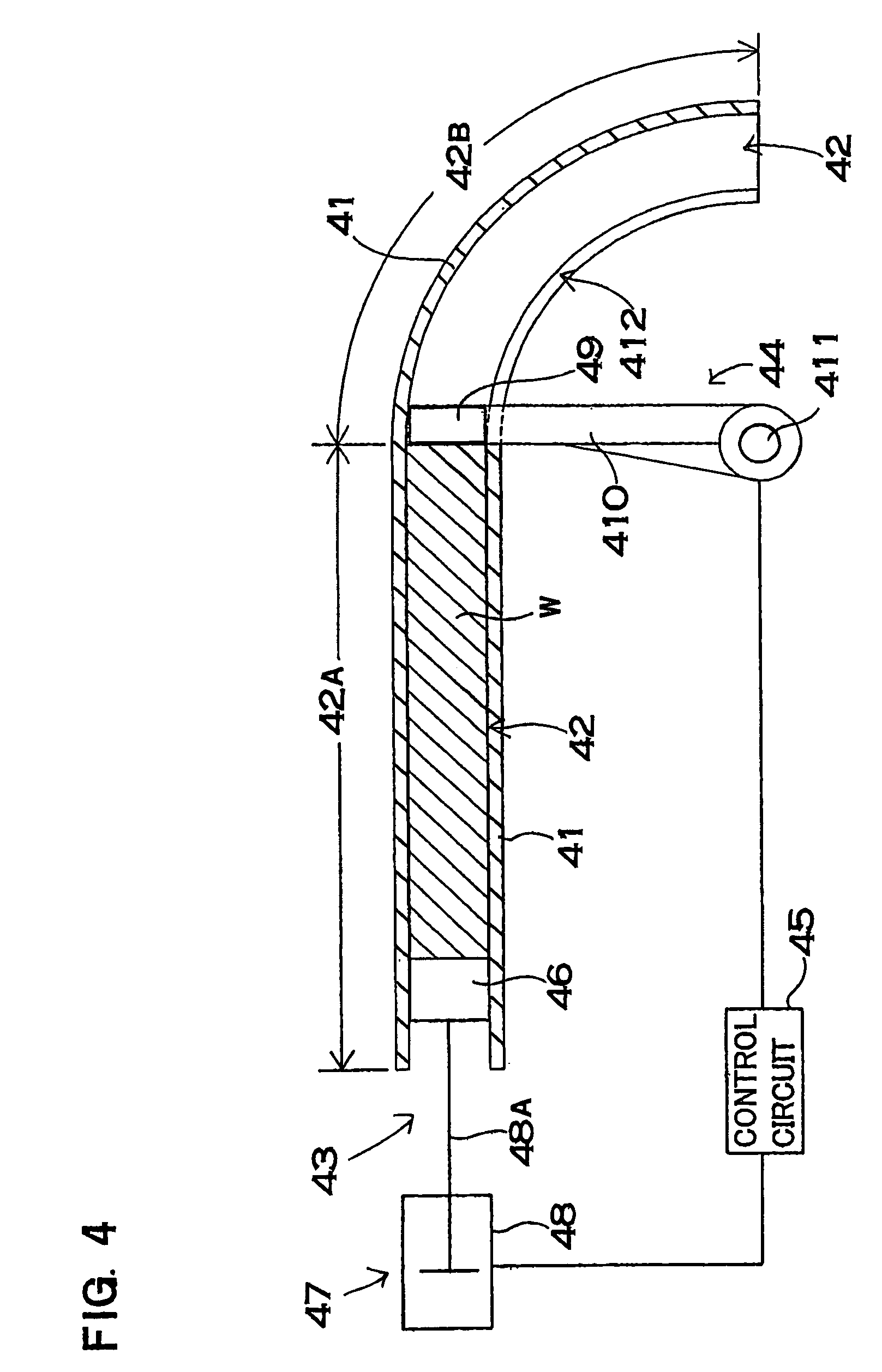Method of bending wood materials and an apparatus for bending wood materials
a wood material and bending technology, applied in the direction of wood compression, wood working apparatus, manufacturing tools, etc., can solve the problems of easy cracking of wood materials, inability to make any thicker, and inability to produce curved shapes of cylindrical wood materials, so as to prevent tension fracture, limit the movement of wood materials, and restrict the amount of stretching
- Summary
- Abstract
- Description
- Claims
- Application Information
AI Technical Summary
Benefits of technology
Problems solved by technology
Method used
Image
Examples
Embodiment Construction
[0027]The method of bending wood materials of the present invention pushes wood material, having a board shape or cylindrical shape of uniform cross-section, via a driving mechanism into the shaping channel of a bending template to bend the wood material within the shaping channel. The front end of wood material moving in the shaping channel is pressed against by a braking mechanism to limit its movement, compress the wood material, limit the amount of stretching of the outer periphery of wood material during bending, and prevent tension fracture due to stretching.
[0028]In the bending method of the present invention, wood material having a board shape or cylindrical shape of essentially uniform cross-section is used as the wood material to be processed. The cross-section of the wood material may be a shape such as square, rectangular, circular, elliptical, or triangular. Further, a lengthwise groove along what will become the inner curved periphery can also be established in the app...
PUM
 Login to View More
Login to View More Abstract
Description
Claims
Application Information
 Login to View More
Login to View More - R&D
- Intellectual Property
- Life Sciences
- Materials
- Tech Scout
- Unparalleled Data Quality
- Higher Quality Content
- 60% Fewer Hallucinations
Browse by: Latest US Patents, China's latest patents, Technical Efficacy Thesaurus, Application Domain, Technology Topic, Popular Technical Reports.
© 2025 PatSnap. All rights reserved.Legal|Privacy policy|Modern Slavery Act Transparency Statement|Sitemap|About US| Contact US: help@patsnap.com



